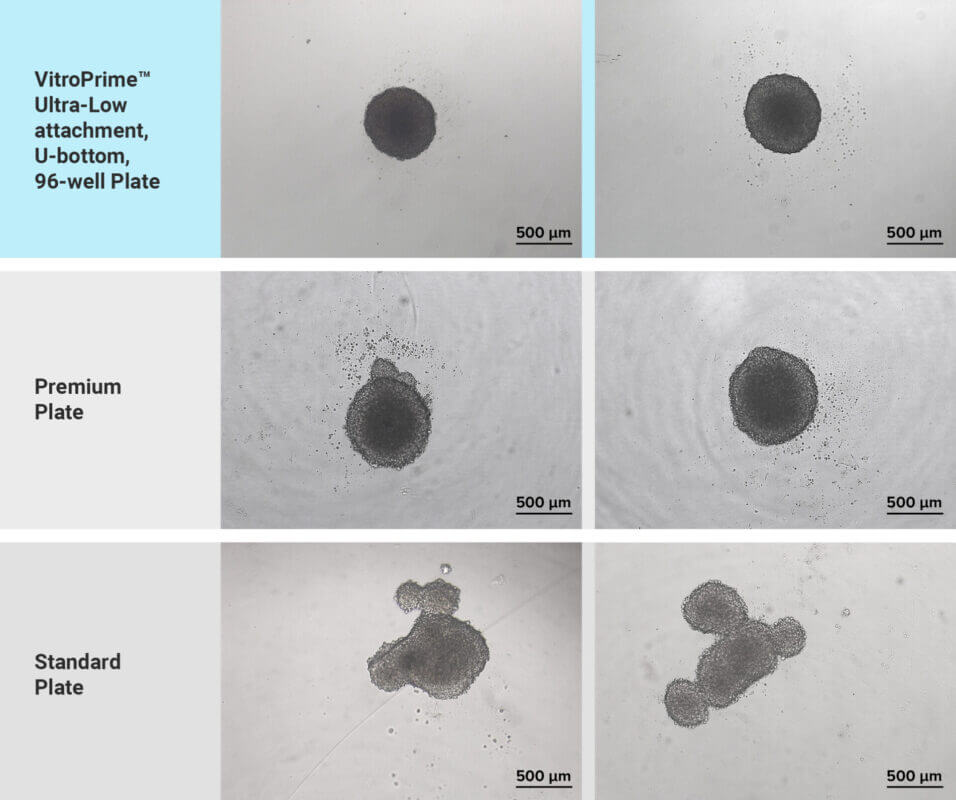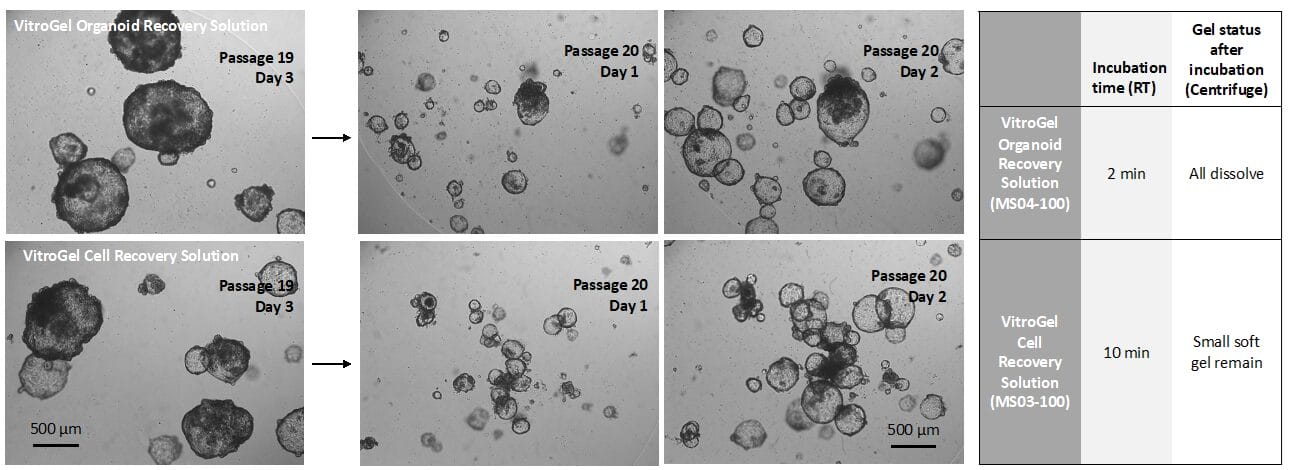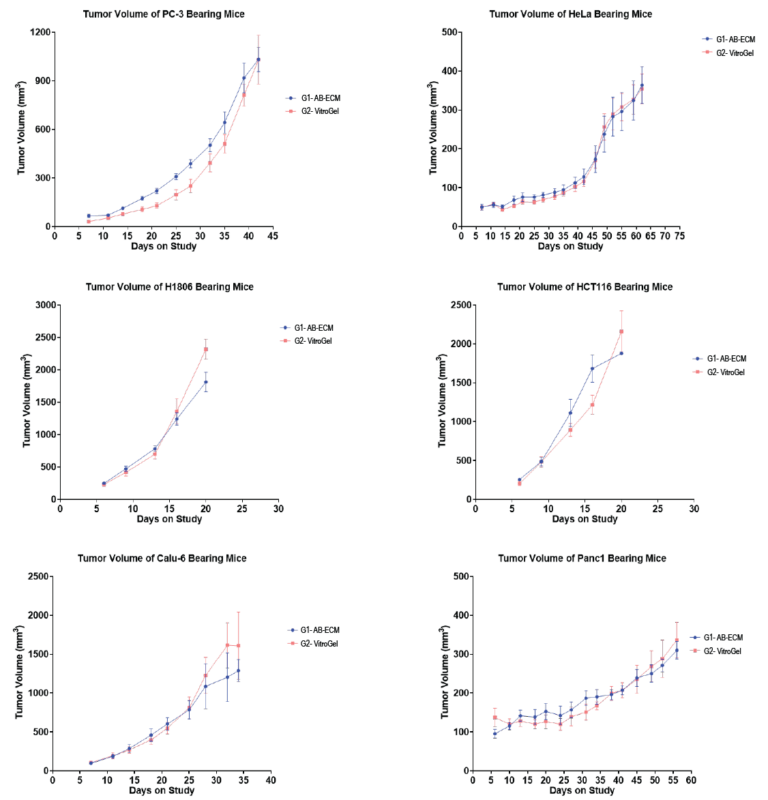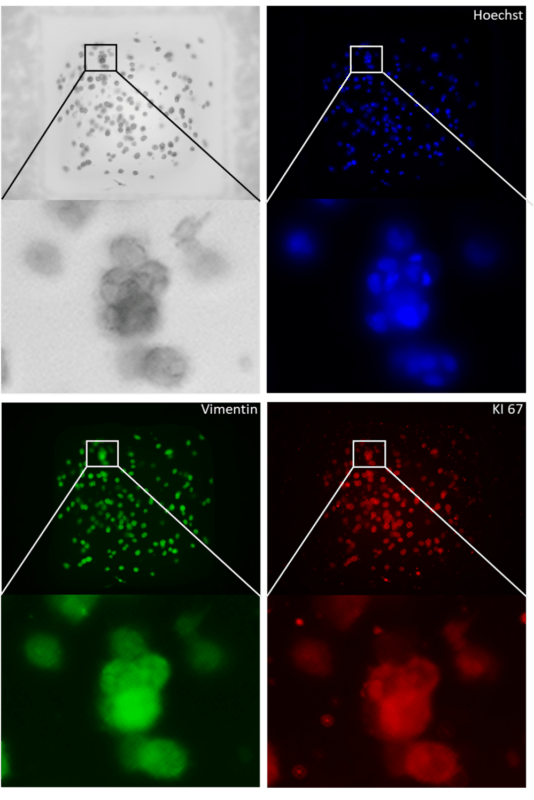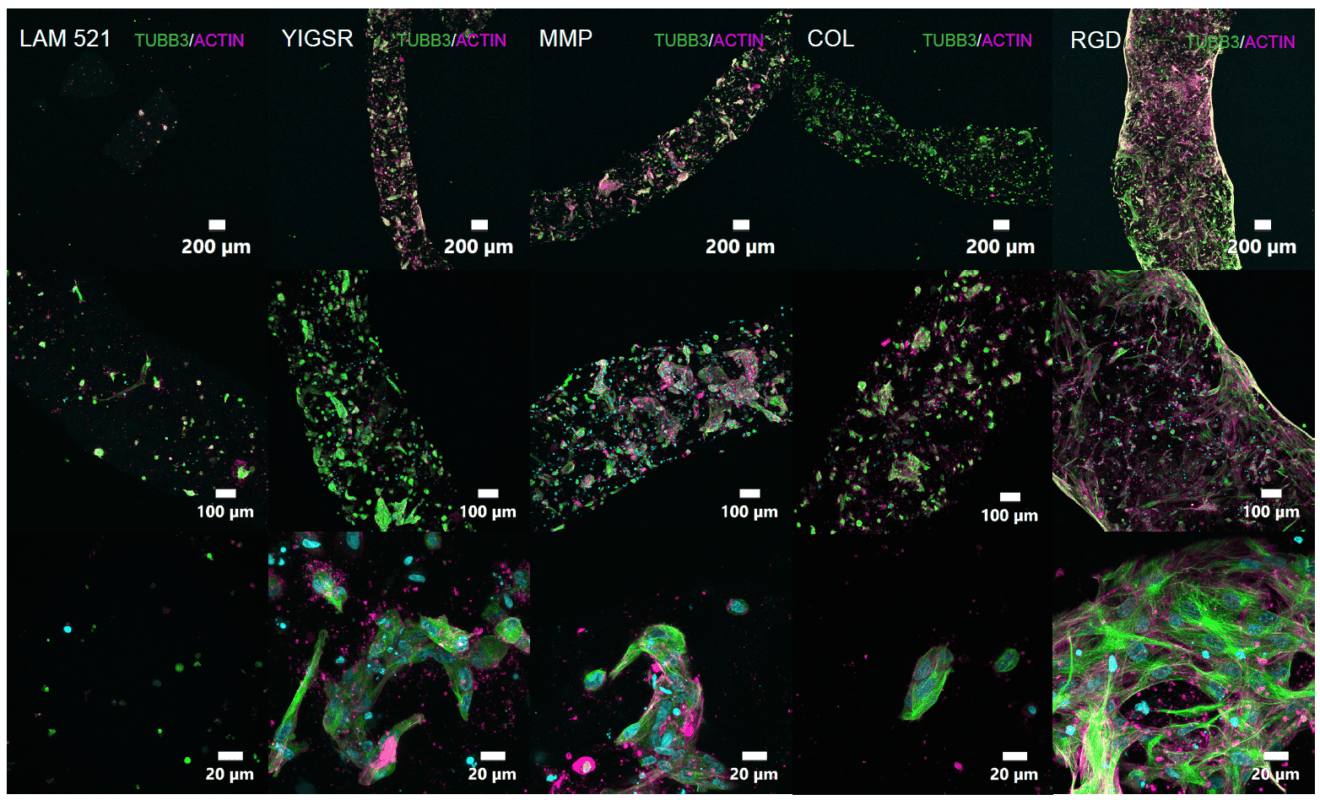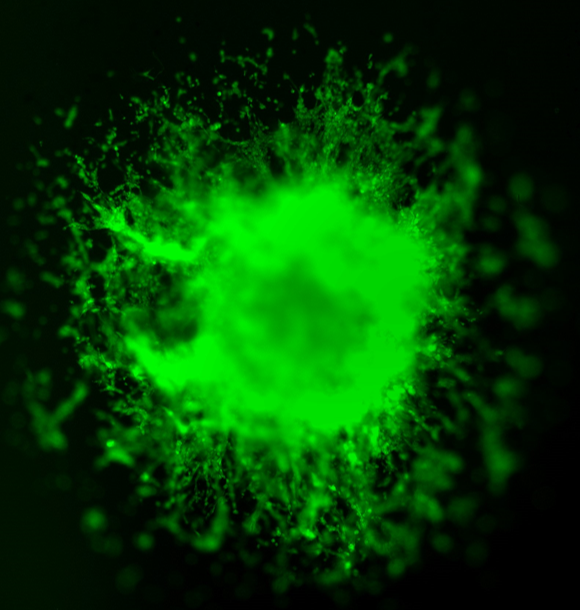Introduction Spheroid invasion assays offer a physiologically relevant three-dimensional (3D) in vitro model for studying cancer cell behavior, surpassing the limitations of traditional two-dimensional (2D) cultures [1]. Spheroids are compact cell aggregates that recapitulate critical in vivo features, including cell–cell and cell–matrix interactions, as well as nutrient and oxygen gradients providing a more accurate representation […]
Category Archives: Application Notes
Introduction Contemporary hydrogel matrices provide enormous advantages for two- and three-dimensional cell culturing. They provide an environment that mimics that of natural tissue, increasing growth rates and offering conditions in which native in vivo cell behavior can be reliably assayed. Choices for hydrogel matrices include those from animal-based extracellular matrices (ECMs) such as Matrigel and […]
Introduction Cell invasion is a dynamic process that is critical during embryonic development, immunosurveillance, and wound healing. Cell invasion is an orchestrated mechanism that occurs due to cell attachment to the extracellular matrix (ECM) followed by proteolytic degradation of the ECM, resulting in movement towards the newly invaded site. Cell invasion is not only crucial […]
Introduction Cancer progression is highly individualized. The mechanism is specific to each animal species, making oncology research one of the most challenging areas in biosciences. Recent advances that focus on the individualized nature of disease progression have been very promising; for example, Patient-Derived Xenografts (PDX) models, in which immunodeficient animals have human-derived tumor tissues embedded […]
Introduction Angiogenesis, or the process of new blood vessel formation by sprouting from the pre-existing vasculature, plays a significant role in physiological and pathological processes, such as tumor growth or inflammation. The angiogenic microenvironment is critical in developing therapies for these pathologies, as endothelial cells can shift from quiescent to angiogenic states, leading to migration […]
The Droplet Microarray Platform The Droplet Microarray (DMA) is made of hydrophilic spots on a superhydrophobic background that allows formation of separated and homogeneous droplets in the sub-microliter range on a planar surface. Precise filling of the DMA spots, which are typically 350-1000 µm in size, is performed using a nanoliter liquid dispenser. A capacity […]
In this work we used VitroGel® matrix for printing 3D cell structures with cells in 96-well format. VitroGel from TheWell Bioscience is a tunable, xeno-free (animal origin-free) bio-functional hydrogel system that allows maximum flexibility to manipulate the 3D cell culture environment. It is temperature-independent and an excellent alternative to animal-based extracellular matrices (ECM), like Matrigel, […]
Introduction The differentiation of sperm, termed spermatogenesis, is coordinated by somatic cells within the seminiferous tubules of the testis niche. Spermatogonial stem cells – the progenitor cells which give rise to sperm – form physical attachments to somatic cells called Sertoli cells, which guide their differentiation through a program of paracrine signaling.1 Human in vitro […]
Application Note TheWell Bioscience, North Brunswick, NJ 08902 Over the past decade, advances in stem cells and 3D cell culture technologies have reignited interest in organoid research. Organoids are derived from stem cells such as human pluripotent stem cells (hPSCs) or stem/progenitor cells and are composed of different cell types that are able to self-organize, […]
Application Note Nana-Fatima Haruna, John Huang TheWell Bioscience, North Brunswick, NJ 08902 Introduction Cell migration and invasion play important roles in various physiological processes such as gastrulation, embryonic morphogenesis, development of the nervous system, and immune cell trafficking. Cells need to be able to change, interact with their environment, and reach their proper spatial orientation […]

